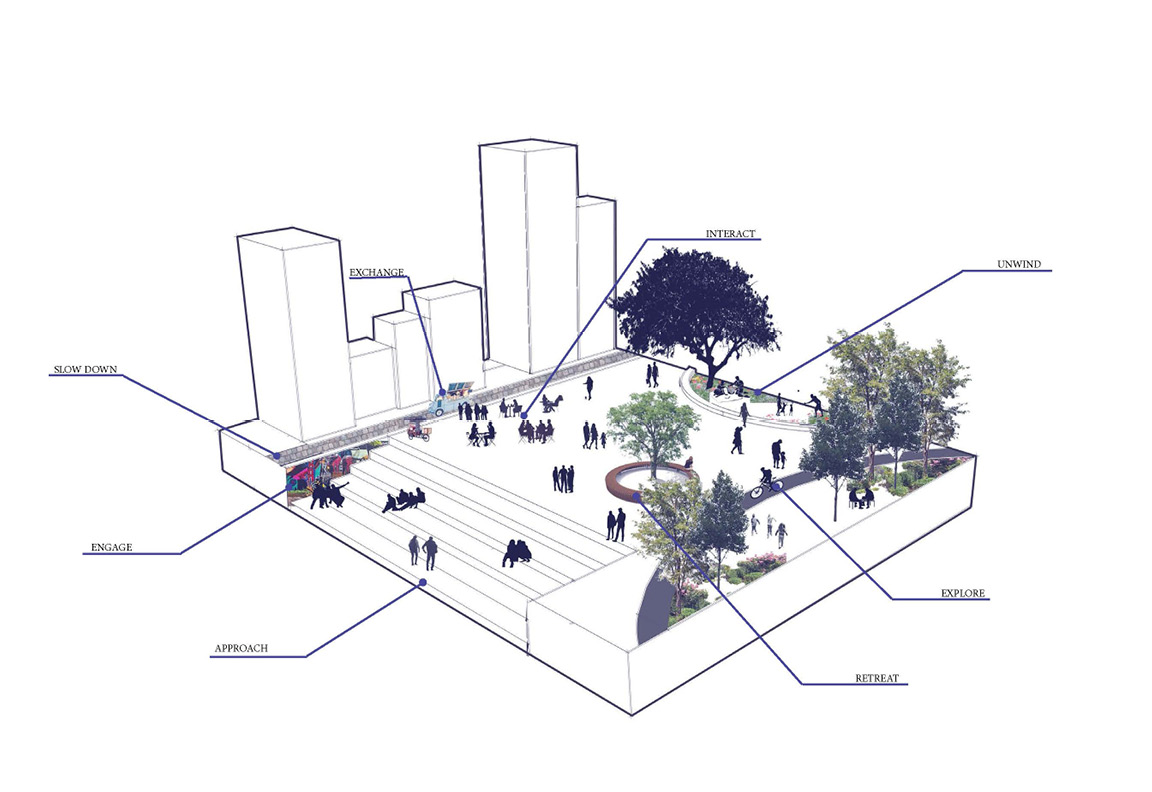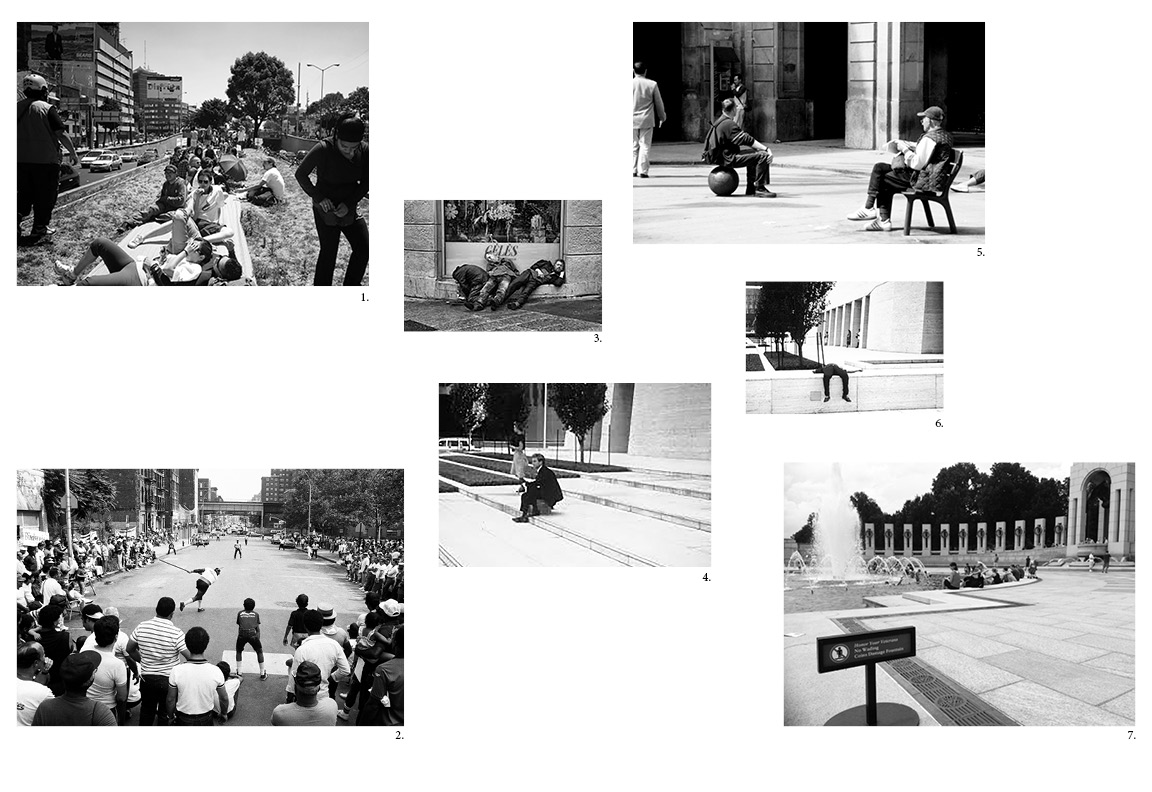Taylor Proctor is a graduate student at the School of the Art Institute of Chicago receiving a Master of Architecture with an Emphasis in Interior Architecture degree. After graduating from Morgan State University with a Bachelor of Science in Architecture and Environmental Design, Taylor left her home in Maryland to study architecture in Chicago. Her experiences and interest in travel sparked curiosity in the relationship between culture and design. This led to the study of sociological and psychological architecture. Believing that a person’s experiences help to shape who they become, Taylor hopes to combine her appreciation for visual art, design, and architecture into a career that will allow her to create spaces that positively impact the people who experience them.

Architectural Expressions: The Language of Public Space
Due to investment restructuring in many American cities over the last 50 years, there has been a loss of truly public spaces and the cultural uses they provide. Open public spaces are transitioning into privately owned semi-public spaces that are visibly public in capacity but not in ownership or accessibility. As municipalities sell and transition ownership to private companies, public space becomes more of a business exhibiting the interest of the owner/developer and their clientele and less of a space that serves the community at large where people are provided with places to exercise their human rights. Oftentimes this leaves spaces that cater to the minority upper class and foster a sense of exclusivity instead of inclusivity. This notion feeds into the realities of racism and discrimination that have plagued American cities for years. Properly designed public space can bring a city together fostering a sense of belonging and creating moments for people to come together aiding the need to desegregate American cities.
How can we learn from existing public spaces to activate stronger interior public spaces that fabricate a stronger relationship between exterior and interior public spaces so as to create a more fluid and inclusive urban fabric?
The evolution of public space along with the rapid development of cities has left a series of underused spaces that have the potential to restitch the urban fabric and create spaces for community engagement. This transition of publicly owned public space to privately owned public space often comes with the transition of exterior public space to interior public space. Unfortunately, these interior public spaces lack the necessary cultural and physical qualities to produce thriving public spaces that connect and create a sense of belonging amongst surrounding communities. Important to the livelihood and culture of a city, public space is meant to act as a cultural hub for community members, creating spaces for celebration, social and economic exchange, meeting places, and space for different cultures to come together. Because of these qualities, public spaces are an essential part of a city’s identity. It speaks to the values of the city and its people.
How does architecture relate to a city’s identity?
Architecture influences the culture of a city by shaping and revealing its values through tangible design. The individual architectural elements, the forms, and gestures of space provide psychological and sociological cues that manifest the everyday culture of a society. The symbiotic relationship between architecture and society informs spaces, events, and interactions that are either positive, negative, or indifferent to the growth of a city’s culture. For instance, the city of Chicago has an extensive public landscape that comes to life in a variety of ways throughout the year attracting people from all walks of life. However, the city is also referred to as one of the most segregated cities in America. Where does this disconnect lie? Developments that intend to provide valuable or positive spaces are in fact indifferent to the actual growth of Chicago culture. The research highlighted in Architectural Expressions: The Language of Public Space analyzes the current public landscape and the human behavioral patterns resulting from that landscape. In an effort to aid
designers, developers, architects, and municipalities to be more aware of their designs and teach them how to cultivate richer interior public spaces this project looks to decrypt the language of the city.

